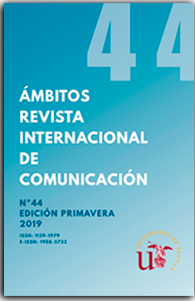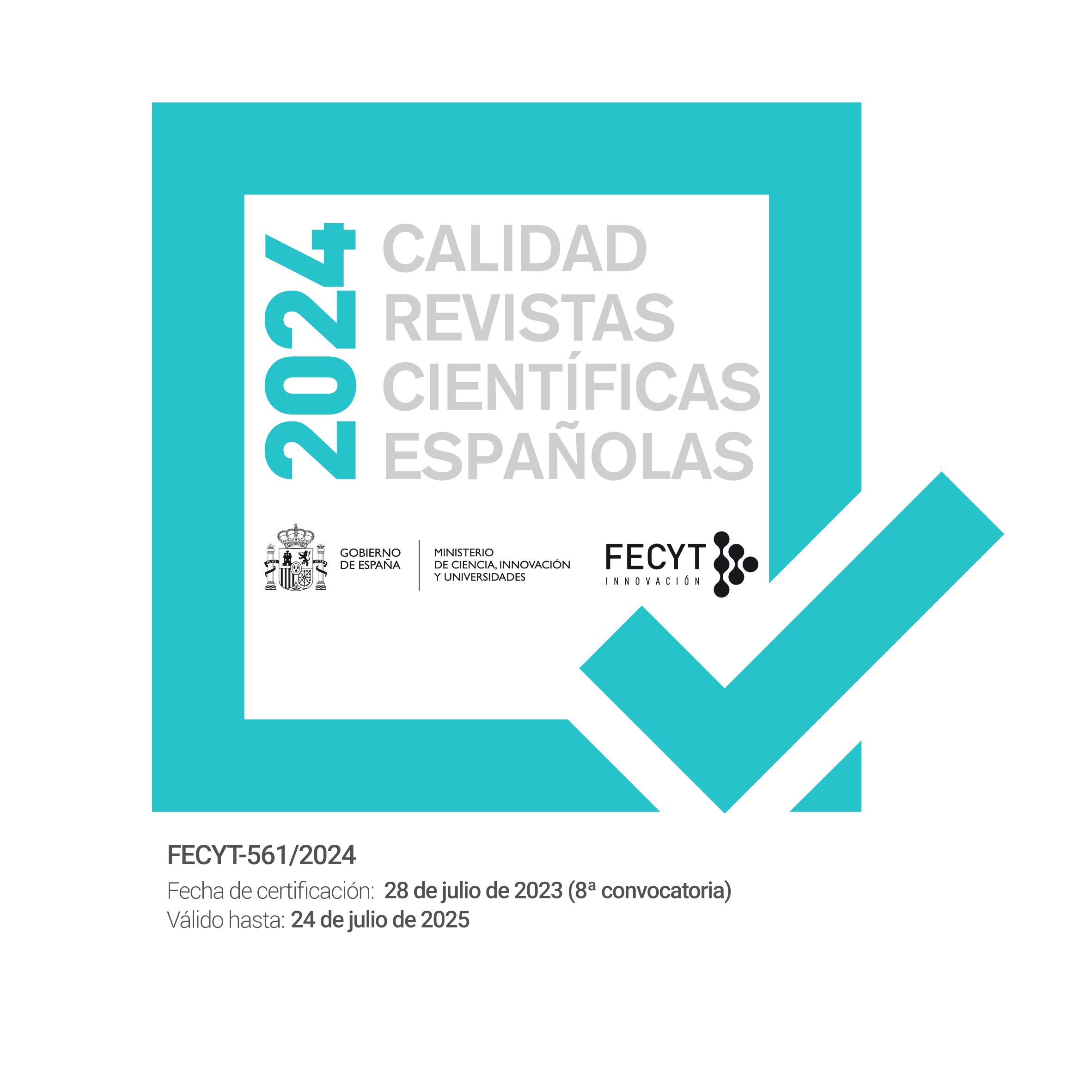Eventos prejudiciais à reputação corporativa: um estudo exploratório utilizando a técnica de vinhetas
DOI:
https://doi.org/10.12795/Ambitos.2019.i44.03Keywords:
Eventos Prejudiciais à Reputação, vinhetas, Investigação Qualitativa, Pesquisa Exploratória.Abstract
Este artigo tem como objetivo explorar, por meio de uma investigação qualitativa, a percepção de gestores de alianças estratégicas sobre como eventos prejudiciais à reputação de parceiros de negócios afetam as parcerias. Além disso, este artigo se propõe a discutir a utilização de vinhetas como uma técnica a ser utilizada em um estudo exploratório. Para atingir este objetivo, foi operacionalizado um estudo que teve como contexto o setor farmacêutico, no qual foram realizadas entrevistas em quatro empresas brasileiras. Na coleta de dados foram utilizadas vinhetas. A técnica de vinhetas é ideal para ser utilizada em situações em que é preciso compreender o julgamento do participante sobre uma determinada situação-estímulo. Neste sentido, nas entrevistas, buscou-se explorar a percepção de gestores de alianças estratégicas com relação a eventos prejudiciais à reputação corporativa do parceiro nas alianças. As transcrições literais, resultantes das entrevistas, foram analisadas com o uso do aplicativo NVivo, nas etapas de preparação dos dados, codificação, análise das respostas dos entrevistados e elaboração do relatório para apresentação dos resultados. Como principal resultado obtido destaca-se o papel da repercussão de um evento prejudicial à reputação nos meios comunicação como um importante determinante para a tomada de decisão dos gestores de alianças estratégicas. Este estudo também foi bem sucedido em demonstrar que o uso de vinhetas de maneira qualitativa é uma técnica adequada para ser utilizada em estudos exploratórios.
Downloads
Metrics
References
Alexander, C., & Becker, H. (1978). The use of vignettes in survey research. Public Opinion Quarterly, 42, 93.
Autor A, & Autor B (2018). Utilização de Vinhetas para a Coleta de Dados: Aplicação em um Estudo Exploratório sobre Eventos Prejudiciais à Reputação. Atas CIAIQ2018, 7o. Congresso Ibero-Americano de Investigação Qualitativa, 3, 47–56.
Ashta, A., Stokes, P., & Hughes, P. (2018). Change management in Indo-Japanese cross-cultural collaborative contexts: Parallels between traditional Indian philosophy and contemporary Japanese management. Journal of Organizational Change Management, 31, 230–247.
Barney, J. (1991). Firm Resources and Sustained Competitive. Journal of Management, 17, 99–120.
Barter, C., & Renold, E. (1999). The Use of Vignettes in Qualitative Research. Social Research Update, 1–7.
Barter, C., & Renold, E. (2000). “I wanna tell you a story”: Exploring the application of vignettes in qualitative research with children and young people. International Journal of Social Research Methodology, 3, 307–323.
Berg Johansen, C., & De Cock, C. (2018). Ideologies of time: How elite corporate actors engage the future. Organization, 25, 186–204.
Coombs, W. T. (2007). Protecting organization reputations during a crisis: The development and application of situational crisis communication theory. Corporate Reputation Review, 10, 163–176.
Coombs, W. T., & Holladay, S. J. (2002). Helping Crisis Managers Protect Reputational Assets: Initial Tests of the Situational Crisis Communication Theory. Management Communication Quarterly, 16, 165–186.
Crafter, S., De Abreu, G., Cline, T., & O’Dell, L. (2010). Using the vignette methodology as a tool for exploring cultural identity positions. European Association for Research on Learning and Instruction (EARLI) Special Interest Group 21: Learning and Teaching in Culturally Diverse Settings: Moving through Cultures of Learning, 2–3.
Dollinger, M. J., Golden, P. A., & Saxton, T. (1997). The Effect of Reputation on the Decision to Joint Venture. Strategic Management Journal, 18, 127–140.
Eskelinen, L., & Caswell, D. (2006). Comparison of Social Work Practice in Teams Using a Video Vignette Technique in a Multi-method Design. Qualitative Social Work, 5, 489–503.
Feldman, P. M., Bahamonde, R. A., & Bellido, I. V. (2014). A new approach for measuring corporate reputation. RAE-Revista de Administração de Empresas, 54, 53–67.
Finch, J., & Mason, J. (1991). Obligations of kinship in contemporary Britain: is there normative agreement? The British Journal of Sociology, 42, 345–367.
Flores, J. G. (1994). Análisis datos cualitativos: Aplicaciones a investigación educativa. Barcelona: Latorre Literaria.
Fombrun, C. J. (1996). Reputation: Realizing Value from the Corporate Image. The Service Industries Journal, 10, 99–101.
Fombrun, C. J., Gardberg, N. A., & Sever, J. W. (2000). The Reputation QuotientSM : A Multi-Stakeholder Measure of Corporate Reputation. The Journal of Brand Management, 7, 241–255.
Fombrun, C. J., & Shanley, M. (1990). What’S in a Name? Reputation Building and Corporate Strategy. Academy of Management Journal, 33, 233–258.
Gatzert, N. (2015). The impact of corporate reputation and reputation damaging events on financial performance: Empirical evidence from the literature. European Management Journal, 33, 485–499.
Gatzert, N., Schmit, J. T., & Kolb, A. (2016). Assessing the Risks of Insuring Reputation Risk. Journal of Risk and Insurance, 83, 641–679.
Gertsen, F. H. M., van Riel, C. B. M., & Berens, G. (2006). Avoiding Reputation Damage in Financial Restatements. Long Range Planning, 39, 429–456.
Godoi, C. K., & Balsini, C. P. V. (2006). A visão qualitativa nos estudos organizacionais: elementos metodológico-epistemológicos. In Pesquisa qualitativa em estudos organizacionais: paradigmas, estratégias e métodos. (pp. 93–96). São Paulo: Saraiva.
Gourlay, A., Mshana, G., Birdthistle, I., Bulugu, G., Zaba, B., & Urassa, M. (2014). Using vignettes in qualitative research to explore barriers and facilitating factors to the uptake of prevention of mother-to-child transmission services in rural Tanzania: a critical analysis. BMC Medical Research Methodology, 14, 21.
Hirsch, B., & Meyer, M. (2010). Integrating soft factors into the assessment of cooperative relationships between firms: Accounting for reputation and ethical values. Business Ethics, 19, 81–94.
Hughes, R. (1998). Considering the Vignette Technique and its Application to a Study of Drug injecting and HIV Risk and Safer Behaviour. Sociology of Health & Illness, 20, 381–400.
Hughes, R., & Huby, M. (2001). The application of vignettes in social and nursing research. Journal of Advanced Nursing, 37, 382–386.
Hutt, R. W. (2016). Reputation on the line: the Starbucks cases. Journal of Business Strategy, 37, 19–26.
Jenkins, N. (2006). Developing interactive vignettes in a study of young people’s injury-risking behavior. Qualitative Researcher, 7–8.
Jenkins, N., Bloor, M. J., Fischer, J., Berney, L., & Neale, J. (2010). Putting it in context: the use of vignettes in qualitative interviewing. Qualitative Research, 10, 175–198.
Lieberman, A. (1987). Documenting Professional Practice: The Vignette as a Qualitative Tool. In Annual Meeting of the American Educational Research Association (pp. 1–14). Washington: Annual Meeting of the American Educational Research Association.
Mariano, S. (2018). Initiating, challenging and improving knowledge in organizational contexts. Management Research Review, 41, 278–295.
Miles, M. B. M., & Huberman, A. M. (1994). Qualitative Data Analysis: A Methods Sourcebook. (Thousand Oaks, Ed.). CA: Sage.
Renold, E. (2002). Using Vignettes in Qualitative Researsch. Building Research Capacity, 3–5.
Reputation Institute. (2016). Reputation Leaders Study 2016: How Global Executives Grapple with Today’s Reputation Risks and Capitalize on Opportunities.
Rhee, M., & Kim, T. (2012). After the collapse: A behavioral theory of reputation repair. In The Oxford Handbook of Corporate Reputation (pp. 446–465). Oxford, UK: Oxford University Press.
Rhee, M., & Valdez, M. E. (2009). Contextual Factors Surrounding Reputation Damage With Potential Implications for Reputation Repair. The Academy of Management Review, 34, 146–168.
Roberts, P. W., & Dowling, G. R. (2002). Corporate reputation and sustained superior financial performance. Strategic Management Journal, 23, 1077–1093.
Santos, M. C. G., & Pinho, M. (2012). Estratégias tecnológicas em transformação: um estudo da indústria farmacêutica brasileira. Gestão & Produção, 19, 405–418.
Spalding, N. J., & Phillips, T. (2007). Exploring the use of vignettes: from validity to trustworthiness. Qualitative Health Research, 17, 954–962.
Sydow, J. (1998). Understanding the Constitution of Interorganizational Trust. In Trust within and between organizations: Conceptual issues and empirical applications. (pp. 12–14). Oxford, UK: Oxford University Press.
Tettegah, S., Bailey, B. P., & Taylor, K. (2007). Clover: Narratives and Simulations in Virtual Environments. The Journal of Negro Education, 76, 43–56.
Wagner, S. M., Coley, L. S., & Lindemann, E. (2011). Effects of suppliers’ reputation on the future of buyer-supplier relationships: The mediating roles of outcome fairness and trust. Journal of Supply Chain Management, 47, 29–48.
Wilson, J., & While, A. E. (1998). Methodological issues surrounding the use of vignettes in qualitative research. Journal of Interprofessional Care.
Wright, J. M., Heathcote, K., & Wibberley, C. (2014). Fact or fiction: Exploring the use of real stories in place of vignettes in interviews with informal carers. Nurse Researcher, 21, 39–43.
Downloads
Published
How to Cite
Issue
Section
License
Ámbitos. Revista Internacional de Comunicación is an open access journal, which means that all content is freely available at no charge to the user or their institution. Users may read, download, copy, distribute, distribute, print, search or link to the full text of articles, or use them for any other lawful purpose, without seeking prior permission from the publisher or author. This definition of open access is in accordance with the Budapest Open Access Initiative (BOAI).

Unless otherwise noted, all content in the electronic edition is distributed under a "Creative Commons Attribution-NonCommercial-ShareAlike 4.0 International License". You can consult the informative version and legal text of the licence here. This should be expressly stated in this way where necessary.
In case of acceptance of the manuscript, the authors cede the rights of the work for its publication to Ámbitos. Revista Internacional de Comunicación under the Attribution-NonCommercial-ShareAlike 4.0 International license contract (CC BY-NC-SA 4.0). The authors retain copyright and third parties are authorised to copy, distribute and make use of the work, provided they comply with the terms and conditions set out in the licence
- Cite the authorship and the original source of publication (journal, publisher and URL of the work).
- Do not use them for commercial purposes.
- If you remix, transform or create from the material, you must release your contributions under the same license as the original.
More information can be found at https://creativecommons.org/licenses/by-nc-sa/4.0/deed.es
- Abstract 290
- PDF (Português (Brasil)) 188


















